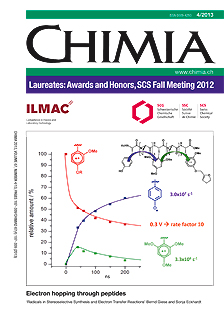Total Synthesis of the Myxobacterial Macrolide Ripostatin B
DOI:
https://doi.org/10.2533/chimia.2013.227Keywords:
Antibiotics, Ring-closing metathesis, Ripostatin, Rna polymerase, Total synthesisAbstract
This article describes the total synthesis of ripostatin B, which is a 14-membered macrolide of myxobacterial origin that inhibits E. coli RNA polymerase by a different mechanism of action than the first-line anti-tuberculosis drug rifampicin. Structurally, ripostatin B features a labile and synthetically challenging doubly skipped triene motif embedded in the macrolactone ring. Key steps in the synthesis were a Paterson aldol reaction, a low-temperature Yamaguchi esterification and an alkene metathesis reaction to close the macrolide ring. The natural product was synthesized in a longest linear sequence of 21 steps and 3.6% overall yield.Downloads
Published
2013-04-24
How to Cite
[1]
F. Glaus, K.-H. Altmann, Chimia 2013, 67, 227, DOI: 10.2533/chimia.2013.227.
Issue
Section
Scientific Articles
License
Copyright (c) 2013 Swiss Chemical Society

This work is licensed under a Creative Commons Attribution-NonCommercial 4.0 International License.







